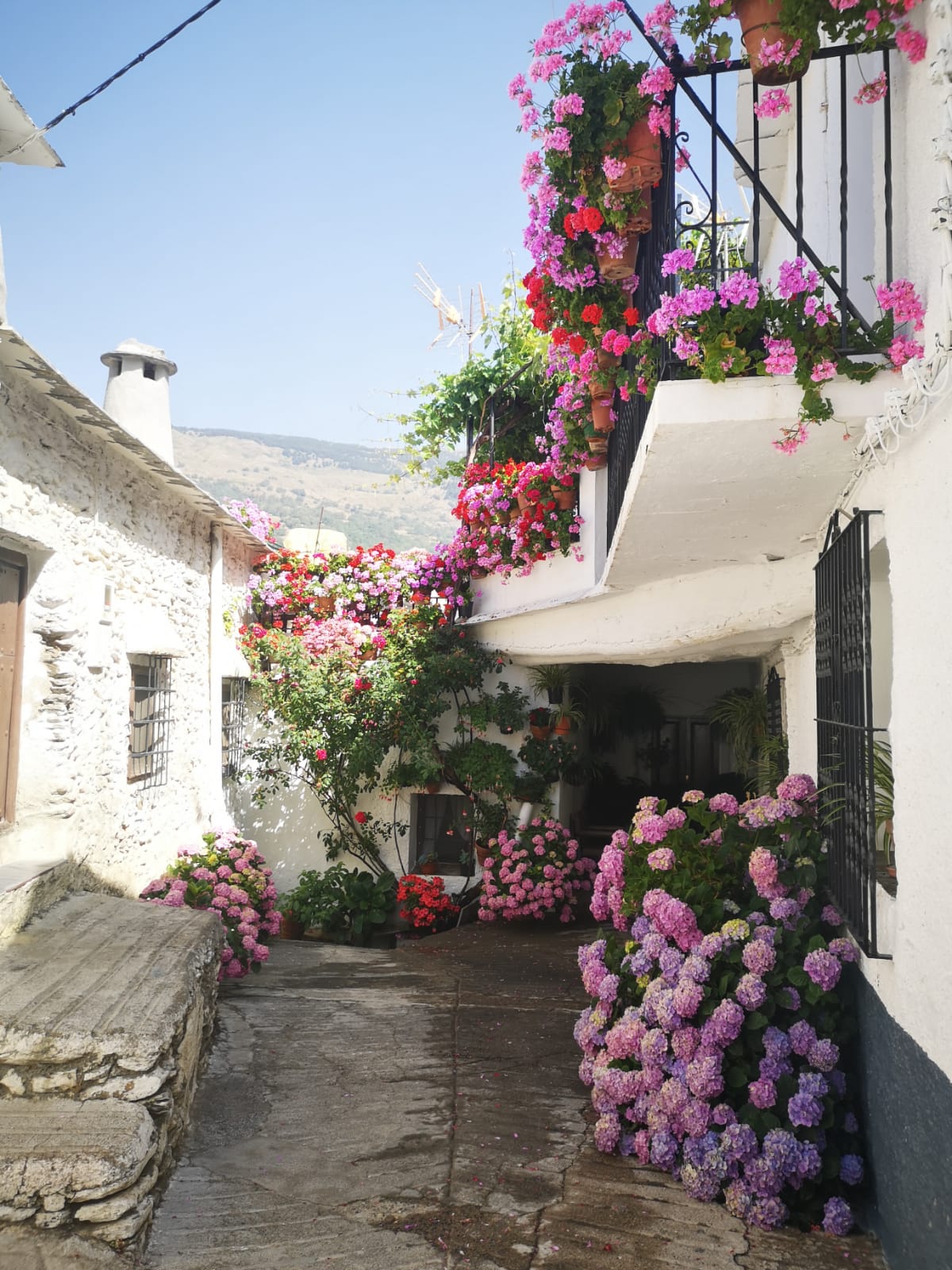The Nasrid Palaces are one of the most popular tourist attractions in Granada city, located in South Spain.
They are visited by millions of people each year and belong to the monumental complex of the Alhambra.
1.1 What are the Nasrid Palaces?
The Narid Palaces are a set of palatial buildings that are part of and belong to the complex of the Alhambra of Granada.
We must keep in mind that we are talking about a UNESCO World Heritage Site and one of the most important examples of Moorish architecture in the world.
Unquestionably, the history of the Nasrid Palaces, and architecture are some of the main reasons why this site is visited by such many people every day, but also the breathtaking beauty of the palaces that trust me, can´t be described in words.
Three palaces form this enclosure: the Mexuar, the Palace of Comares, or Yusuf I, and the Palace of the Lions, or Mohammed V.
- Mexuar: it is the smallest of the Nasrid Palaces and is known for its simple but elegant architecture. The room is decorated with stucco work, tiles, and arches.
- Palace of Comares: it is the largest and most impressive of the Nasrid Palaces, and is known for its stunning architecture, including its intricate stucco work, beautiful tiles, and graceful arches. The most famous room in the Palacio de Comares is the Salón de Embajadores, which was used for receiving foreign dignitaries.
- Palace of Lions: is known for its famous Patio de los Leones, which is surrounded by a fountain with 12 lions. The patio is a popular spot for visitors to relax and enjoy the beauty of the Alhambra.
1.2 The History of the Nasrid Palaces and the Nasrid Dynasty
By the same token as other monumental complexes, The Nasrid Palaces were built over several centuries.
It was the founder of the Nasrid dynasty, Alhamar, who began to build the palaces in the 13th century and the final additions were made in the 15th century. Although the buildings that have survived to the present date date mainly from the 14th century.
The Nasrid Palaces were used as the residence of the Nasrid sultans until the fall of Granada to the Christians in 1492.
Summing up, the Nasrids were a Berber dynasty that ruled over the Emirate of Granada from 1238 to 1492. They were the last Muslim rulers of Spain and were known for their sophisticated culture and art. That is the reason why the Palaces are known by their name.
The Nasrids came to power in Granada after the collapse of the Almohad dynasty. They immediately began to build the Alhambra as their new capital and ruled Granada for over 250 years. During this time, they built many other important buildings in the city, including the Great Mosque of Granada and the Generalife.
1.3 The Nasrid Palaces after the Conquest of Granada
In 1492, the Catholic Monarchs, Isabel I of Castile and Fernando II of Aragon, conquered Granada and ended Muslim rule in the Iberian Peninsula. The Nasrid Palaces were taken over by the Catholic Monarchs and became the royal residence of the Spanish monarchs.
Isabel and Fernando (the Catholic Monarchs) made some changes to the Nasrid Palaces, but they generally preserved the original Moorish architecture. They added some Christian symbols, such as crosses and religious paintings, but they did not alter the overall appearance of the palaces.
In the 16th century, the Spanish monarchs began to use the Nasrid Palaces less frequently. They preferred to live in the new palaces that they were building in the city of Madrid. As a result, the Nasrid Palaces fell into disrepair.
In the 19th century, the Alhambra was restored by the Spanish government. The restoration work was completed in the early 20th century, and the Nasrid Palaces have been open to the public ever since.
1.4 The Nasrid Palaces at present
Today, the Nasrid Palaces are a testament to the skill and artistry of the Nasrid craftsmen. The palaces are decorated with intricate stuccowork, tilework, and carvings.
To conclude, the palaces are well-maintained and in good condition. They are open to the public for guided tours. The Spanish government is committed to preserving the Nasrid Palaces and ensuring that they are enjoyed by future generations.
They are a symbol of cultural heritage and a reminder of the importance of tolerance and understanding.
1.5 The best way to discover the Nasrid Palaces
There are plenty of travel agencies that offer Alhambra guided tours and tickets, and that is the easiest way to visit Alhambra.
Discovering Spain offers Alhambra guided tours daily in several languages. Our tours are led by experienced guides who are passionate about the Alhambra and its heritage. We will take you to all the highlights of the Palaces and Fortress, and we will share with you the fascinating history and stories of this magical place.
Thank you but I prefer to buy my ticket
No problem at all! Here is a list of all the points of sale:
- Online, via the official Alhambra website.
- By telephone, +34 858 889 002
- On site at the ticket office on the same day of your visit, if the tickets are not sold out.










